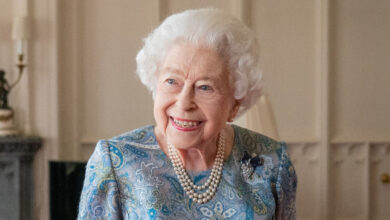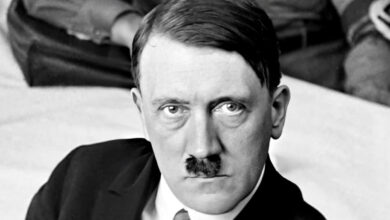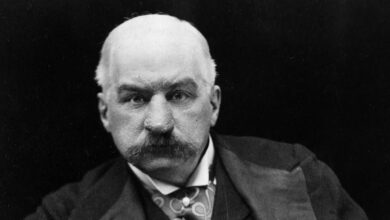Podcast: Play in new window | Download
Subscribe: Spotify | Amazon Music | Youtube Music | RSS
“Life is too short to work so hard.” – Vivien Leigh
The British Actress known as Vivien Leigh was born in Darjeeling, in what was then British India on 5 November 1913. She was the only child of Ernest Richard Hadley, a Scottish-born broker and his wife Gertrude Mary Frances, a devout Roman Catholic who was born in Darjeeling.
When Vivian was nearly four years old, her father was appointed as an officer in the Indian Cavalry and was transferred to Bangalore, whilst Vivian and her mother stayed behind in Ooty, a hill station in the Nilgiri Hills where Gertrude was involved in an amateur theatre group. Her daughter’s first taste of performing on stage came about during this time when she recited Little Beau Peep for the group. By the time she was six, Vivian and her family had started moving around different places in Europe and so she attended various schools in France and Italy, becoming fluent in the languages of both countries.
In 1931, the family returned to Europe and Vivian saw the film A Connecticut Yankee, after which she expressed a desire to become an actress, so her father enrolled her at the Royal Academy of Dramatic Art (RADA).
In the same year, Vivian, who was now seventeen years old met a barrister, 13 years her senior, called Leigh Holman and the couple married on 20 December 1932, even though he had expressed that he didn’t approve of theatre types, which prompted her to call a halt to her studies at RADA. The following year on 12 October Vivian gave birth to a daughter called Suzanne.
Although she was no longer studying at RADA, her friends knew of her interest in acting and persuaded her to take on a role as a schoolgirl in the film Things Are Looking Up. She was an uncredited extra but playing the part prompted her to get an agent, John Gliddon, which led to her being cast in a play called The Mask of Virtue. Gliddon also said that Vivian Holman wasn’t a great name for an actress and after rejecting several suggestions, she settled on Vivian Leigh with the spelling of her first name being altered by accident to Vivien in the billing for the play.
As fortune would have it, in late 1935 she made the acquaintance of Laurence Olivier who had seen The Mask of Virtue and congratulated her on her performance.
In 1937, Leigh and Olivier played the parts of lovers in the film Fire Over England and the pair began an affair. At the same time, Vivien had been reading the book Gone with the Wind by Margaret Mitchell and she instructed her agent to put her name forward to David O. Selznick who was planning to make a film based on the book. Leigh even remarked to a journalist that she was hoping to get the part of Scarlett O’Hara.
In the meantime, she starred opposite Olivier again, this time in Denmark in a production of Hamlet during which Vivien started screaming at Olivier for no apparent reason before becoming silent and going on to perform without a problem. It was the first time that such behaviour had been witnessed by Olivier with whom Leigh was now living, even though neither had been granted a divorce by their partners, but it wouldn’t be the last as Vivien soon started to develop a reputation for erratic behaviour and for being difficult to work with.
In 1939, Laurence Olivier travelled to the United States to take the part of Heathcliff in Wuthering Heights to broaden his appeal and hopefully become better known to US audiences. Vivien was offered a part in the film, but as it wasn’t the lead part of Cathy, she refused. At the same time, David O. Selznick had started to look seriously for someone to play the part of Scarlett O’Hara in Gone with the Wind but he had already discounted Vivien for being too British after having seen her performance in Fire Over England. Leigh wasn’t going to take no for an answer though and travelled to Los Angeles to see Olivier and at the same time try to convince Selznick that she would indeed make a good Scarlett.
After an encounter was engineered by Selznick’s brother Myron, Leigh read a scene for him and then secured a screen test with the director George Cukor, the result of which was Vivien Leigh being chosen for the part over the other three potentials, Paulette Goddard, Jean Arthur and Joan Bennett.
Leigh found the experience of filming Gone with the Wind difficult, especially after Cukor had been dismissed and replaced with Victor Fleming. However, in a 2006 biography, Olivia de Havilland stated that Leigh was never manic or ill-disciplined, but was a true professional with only two concerns, one of which was doing her best work and the other of which was missing Laurence Olivier who was working in New York City.
Gone with the Wind won 10 Academy Awards including Best Actress for Vivien Leigh and she became an instant star.
In February 1940 both Olivier and Leigh were granted divorces and on 31 August that year, the couple were married in California. They hoped that this would be the start of a big joint career but the powers that be stopped that from happening, refusing to let them work together on projects such as Alfred Hitchcock’s Rebecca, Pride and Prejudice and Waterloo Bridge. And when the couple mounted their own stage production of Romeo and Juliet on Broadway the press and the critics were openly hostile, citing the adulterous nature of their early relationship and their apparent lack of support for the war effort. This resulted in the show being a flop and was a financial disaster for Leigh and Olivier as they had put most of their combined savings of $40,000 into the project.
They took the criticism on board though and returned to Britain to support the war effort, with Leigh touring Africa in 1943 as part of a revue for the armed forces. In 1944 she fell ill with tuberculosis but seemed to make a full recovery. In 1945 whilst filming Caesar and Cleopatra she fell pregnant but suffered a miscarriage, resulting in her falling into a deep depression. She would sometimes throw hysterical fits and Olivier noticed a pattern of several days of hyperactivity followed by depression and a major breakdown, that would alert him to an impending bipolar episode. Afterwards, Leigh would have no recollection of any of it.
Although their films at this time were not great successes, not the least reason for which was the Hollywood boycott of British films, Laurence Olivier was knighted in 1947 with Vivien Leigh becoming Lady Olivier.
Vivien Leigh’s next role was to be a masterpiece. Initially cast in the West End stage production of A Streetcar Named Desire in the role of Blanche DuBois with Laurence Olivier, who was now on the board of the Old Vic Theatre, directing, she gave 326 performances resulting in Noel Coward calling her magnificent, before moving on to the film version in which she starred opposite Marlon Brando. The film version resulted in her second Academy Award for Best Actress as well as a British Academy of Film and Television Arts Award for Best British Actress. However, although Leigh’s performance won her glowing reviews, the work had been gruelling and in later years she said that playing the part of Blanche DuBois was what ultimately drove her to madness.
During the 1950s Vivien Leigh’s mental health deteriorated. In 1953 she started filming Elephant Walk in Ceylon with Peter Finch with whom she started an affair. However, she had a nervous breakdown and Paramount replaced her with Elizabeth Taylor. Olivier brought her home to London and she confessed to the affair but that fizzled out as a result of her depression. Whilst in London, her friends became aware of her manic depression with David Niven at one point describing her as “quite mad”. In 1956 she became pregnant but suffered another miscarriage following which she entered another period of depression. Her marriage was also now starting to suffer and believing it to be over, she started another affair, this time with the actor Jack Merivale.
In 1960, Laurence Olivier and Vivien Leigh divorced, with him going on to marry Joan Plowright.
Merivale proved to be a calming influence, enabling Leigh to embark on a successful tour of Australia, New Zealand and Latin America, and in 1963 she won a Tony Award for Best Actress in a Musical for her part in Tovarisch. She also starred in the films The Roman Spring of Mrs Stone and 1965’s Ship of Fools which turned out to be her last.
Following several weeks of rest from filming A Delicate Balance with Michael Redgrave in May 1967, during which Vivien Leigh’s tuberculosis resurfaced, she seemed to have recovered but during the very early hours of 8 July, Jack Merivale found her on the floor of her bedroom. It seemed that she had attempted to get to the bathroom, but her lungs filled up with liquid resulting in her collapsing to the floor where she suffocated.
Vivien Leigh’s death, at the age of only 53 was announced to the public later that day and in response, the lights of every theatre in central London were turned off for an hour.
Podcast: Play in new window | Download
Subscribe: Spotify | Amazon Music | Youtube Music | RSS




